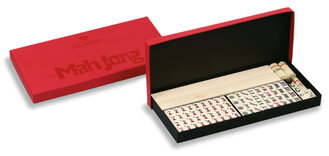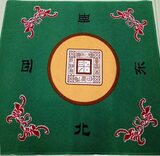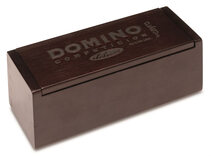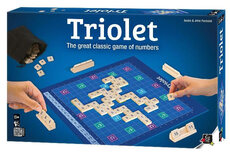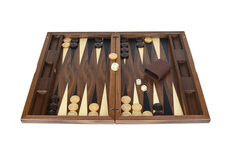Mah Jong (Mahjong)
Mah Jong (Mahjong, Mahjongg or Mah Jongg) is the traditional Chinese tile game now played the world over. Similar to rummy, the game of Mah Jong is easier to play than at first appears and is highly aesthetic to boot. You'll soon be addicted. All our Mah Jong sets are high quality and our excellent range ensures there is a set to suit every player. All these sets would serve as a fantastic present to any Mah Jong enthusiast.
Large Mah Jong (Mahjong) Set in Case with XL Tiles
Out of stock.
Mah Jong set in a leatherette case with XL 35mm tiles.
Dal Negro Mah Jong (Mahjong) Set in Cardboard Box with Racks
£148.99
Mah Jong set in elegant, red cardboard box. Includes racks.
Dal Negro Luxury Mah Jong (Mahjong) Set in Walnut Case
£249.99
Thick composition tiles in a sumptuous Dal Negro inlaid box with racks
Dal Negro Luxury Grand Mah Jong (Mahjong) Set
£269.99
Stunning Mah Jong set by Dal Negro in walnut box with 8 joker tiles.
Mah Jong (Mahjong) Playing Cloth / Mat / Table Cover (80cm)
£24.99
80cm play mat / table cover for Mah Jong games.
Mah Jong (Mahjong) Beginnings
Both the Chinese, and later, the rest of the world decided to embellish the truth about the history of Mah Jong and the result has been a number of spurious assertions for the game's history. As usual with Chinese games, one theory has it that Confucious invented it and mystical histories of hundreds and even thousands of years have been claimed often by western tradesmen keen to impress their potential customers. All this is very unlikely because the truth is that no evidence of the game exists before around 1880. There is good evidence from Chinese researchers that Mah Jong originated in the provinces of Kiangsu, Anhwei and Chekiang near Shanghai because no records of Mah Jong are found in any other part of China before 1900. In 1905, Mah Jong was not really known outside its original area but over the next 15 years Mah Jong spread incredibly quickly across most of China and in doing so supplanted Chess as the most popular Chinese game. The Chinese gradually removed the inelegant elements of game play and incorporated a bevy of rituals surrounding the method of play. Often aficionados of the game regard the variety of Mah Jong of 1920 as the "perfect" Mah Jong and look upon all future modifications and evolutions with great disdain.
Post 1920 Mah Jong (Mahjong) History
When the West "discovered" the game around 1920 the Mah Jong craze enlarged by another factor again to encompass much of the world. Many regions in the Far East play a game akin to the classical Chinese form but in particular, the British, the Americans and the Japanese all grabbed Mah Jong and ran with it in their own direction. Mah Jong first hit Japan in 1907 and, like North America and the British Empire, became a fad in the 1920s. A similar but less dramatic experience to that of America occurred in that the initial game was simplified and then complicated again with new rules. However, the Japanese managed to do this without completely altering the underlying nature of the game and thus the game has remained steadily popular. Japanese Mah Jong rules take two general forms - those adopted officially by the Japanese Mah Jong Association and "riichi", all the unofficial but sometimes more popular versions played by casual players. Unlike other variants, each Japanese round is an all-out race to be the first to go Mah Jong. Mah Jong was taken to America by Joseph P. Babcock who simplified the rules, much of the interesting intricacies of play being removed. Americans were not satisfied for long with this version and began to embellish it, by the addition of an array of weird and wonderful "special hands" that allowed one to go Mah Jong and other new rules supposed to increase the enjoyment. The result was confusion and after a short time, people lost interest in these games and consequently, the Mah Jong bubble burst. In 1935, the game began to gain again in popularity in America based on newly published rules from the The National Mah Jong League Inc. who still claim to produce the "official" American rules. Unfortunately, rather than go back to the essence of the original form, the same error was repeated and an effort to simply fix the flawed existing American games was made. This complicated and pushed American Mah Jong even further from the original form. In Britain, an explosion of interest occurred about the same time as in America and this was mirrored in many other parts of the British Empire, especially in India. Both the American and the Chinese forms were played but it was understood that the Chinese version was the "real" game. The most popular variations were based on semi-official rules in circulation - The Queens Club Rules and the rules laid down in a booklet by C.M.W Higginson. Both of these were based on Chinese variants which probably accounts for the fact that the game remained popular in Britain well into the 1930s. Nowadays, although the usual proliferation of rules exists, the British Mah Jong Federation publish a set of rules that closer to the Chinese game than the Japanese or American varieties.





